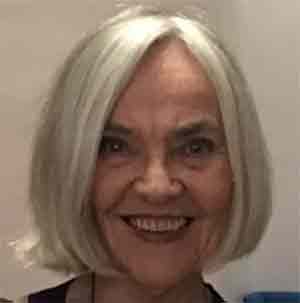
Up close and personal with May-Brit Akerholt, translator of Ibsen's Peer Gynt for Endangered Productions.
Diminutive and with stylish silver tresses, May-Brit’s sharp eyes are the first giveaway to her awesome intellect and passion. Her mastery of translation and commitment to theatre have fuelled her long, illustrious career working with some titans of the Australian arts scene – including Geoffrey Rush, Max Cullen, Kerry Walker, Leah Purcell, Paul Blackwell, Jim Sharman, Neil Armfield and Patrick White.
As a child in Norway, May-Brit followed her grandfather around while he tended his bees, all the while teaching the young May-Brit Esperanto, the universal language. He believed that if we could understand each other, there would be no need for wars. This important relationship between language and human understanding is embedded in May-Brit's love of translation.
After a BA at Oslo University, May-Brit came to Australia with her husband and twin daughters and enrolled in BA Honours at Macquarie University. May-Brit was surprised when her supervisor suggested she explore Ibsen translations. May-Brit jumped at the chance to focus on Norway’s Bard, unwittingly kick-starting her career in the subtle art of translation.
For May-Brit, translation is far removed from literal word substitution (think Google Translate). It is an art form that tries to write a version of a play in another language, preserving the essence of the playwright’s meaning and intent, as well as the tone, rhythm, beauty and clarity of the author’s words. Just as importantly, the translation must honour the text by capturing elusive, often cultural aspects, such as characterisation, allegory and humour.
It's easy for things to get “lost in translation”. In The Wild Duck, May-Brit’s translation draws out Ibsen’s humour about connubial tensions - a husband is embarrassed by his unsophisticated wife’s mispronunciation of the words “portrait” and “pistol”, as “protrait” and “pigstol” (sic). Other translations give the wife’s words a bumpkin hokeyness, (the pistol becomes “that there gun”), or miss the humour entirely (by having her call it just a “gun”). Good translations are built up from hundreds of these forensic musings, big and small. They require deep, intense thought and labour. As May-Brit says, “You have to understand every individual comma”.
May-Brit’s commitment to translation was tested early when she was approached by the Sydney Theatre Company (STC) to do a literal translation Ibsen’s The Pillars of Society. May-Brit managed to convince the General Manager, Donald McDonald, and the director of the production, Phillip Keir, of the need for a proper translation, and in so doing landed her first job with the top theatre company. Working collaboratively with Director Phillip Keir on the translation, May-Brit says, “I had the most wonderful time of my life”. At every rehearsal she would ask herself, “Is this really me?”, and on the Opera House concourse after each performance, she’d pinch herself.
May-Brit went on to become the resident Dramaturg at the STC. Her role was to be a literary advisor and editor working closely with the director to help guide the production. Sadly, while still found in Europe, the role of the Dramaturg is now lost to Australian theatre.
Later, Patrick White ignited May-Brit’s love of Australian drama. Robin Nevin created a silent moment in a Patrick White play, A Cheery Soul, that captured a deep part of May-Brit’s heart and fuelled a lifelong love of his work. He became her Masters’ topic and she wrote a book entitled Patrick White about his works. She was the dramaturg of Neil Armfield’s STC production of White’s play The Ham Funeral, and still remembers how he attended the first week of the rehearsals.
May-Brit has received many other accolades. She has taught at NIDA and Macquarie University and has published extensively. She also championed emerging actors and playwrights during her ten years as Artistic Director of the Australian National Playwrights’ Centre (now dismantled). For two weeks every September in Canberra, she hosted a conference for actors who workshopped new plays to present to producers and directors.
A self-proclaimed non-academic, she has also managed to complete a PhD at the University of Sydney, with a thesis entitled The Dramaturgy of Translation. May-Brit hoped to be a role model for her two grandchildren who attended her graduation. However, a moment of forgetfulness and a missed tassel manoeuvre later, the opportunity was lost, resulting in a gentle admonishment to ‘mormor’ from her progeny.
Now living close to family in the Blue Mountains foothills west of Sydney, May-Brit “doesn’t officially have a job”. Yet she is still in demand as a translator and remains very busy on projects she believes in. May-Brit has also discovered her favourite childhood delicacy at a Harris Farm store in Sydney – ‘brunost’, an aromatic brown cheese known locally as Ski Queen. If you are ever in Springwood, keep an eye out for a small, feisty Norwegian woman with an overflowing red basket of Ski Queen, cycling home from the train station.
